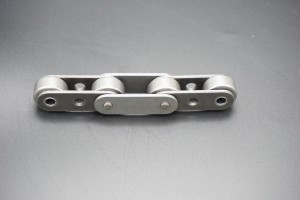The failure of the chain drive is mainly manifested as the failure of the chain. The failure forms of the chain mainly include:
1. Chain fatigue damage:
When the chain is driven, because the tension on the loose side and the tight side of the chain is different, the chain works in a state of alternating tensile stress. After a certain number of stress cycles, the chain elements will be damaged due to insufficient fatigue strength, and the chain plate will undergo fatigue fracture, or fatigue pitting will appear on the surface of the sleeve and roller. In a well-lubricated chain drive, the fatigue strength is the main factor determining the chain drive capacity
2. Magic damage of chain hinges:
When the chain is driven, the pressure on the pin shaft and the sleeve is relatively high, and they rotate relative to each other, which causes the wear of the hinge and makes the actual pitch of the chain longer (the actual pitch of the inner and outer chain links refers to the two adjacent links). The center distance between the rollers, which varies with the wear conditions in use), as shown in the figure. After the hinge is worn, since the increase of the actual pitch mainly occurs in the outer chain link, the actual pitch of the inner chain link is hardly affected by the wear and remains unchanged, thus increasing the unevenness of the actual pitch of each chain link, making the transmission Even less stable. When the actual pitch of the chain is stretched to a certain extent due to wear, the meshing between the chain and the gear teeth deteriorates, resulting in climbing and jumping teeth (if you have ridden an old bicycle with a severely worn chain, you may have such experience) , wear is the main failure mode of poorly lubricated open chain drives. The service life of the chain drive is greatly reduced.
3. Gluing of chain hinges:
At high speed and heavy load, it is difficult to form a lubricating oil film between the contact surface of the pin shaft and the sleeve, and the direct contact of the metal leads to gluing. Gluing limits the limit speed of the chain drive. 4. Chain impact breaking:
For the chain drive with large loose side sag due to poor tension, the huge impact generated during repeated starting, braking or reversing will make the pin shaft, sleeve, roller and other components less than fatigued. Impact fracture occurs. 5. The overload of the chain is broken:
When the low-speed and heavy-duty chain drive is overloaded, it is broken due to insufficient static strength
Post time: Aug-28-2023

